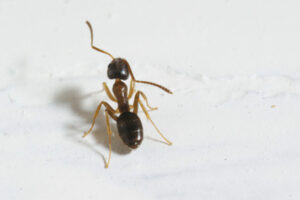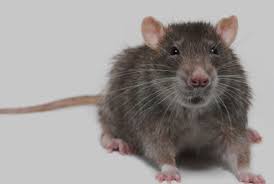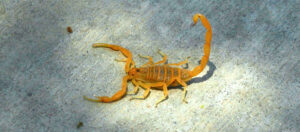Pests Awaken in the Spring to Threaten Commercial Properties
Spring is an enjoyable time of the year. Flowers and trees are coming back, and the temperatures are consistently better than what winter had to offer. Spring is also the time of year when pests awake from their winter dormancy and become active around commercial properties.
With warmer temperatures arriving earlier than normal in much of the Sprague service area and higher than normal winter rains (and snow) levels, conditions are primed for pest populations to surge this spring.
Sprague’s board-certified entomologists Ashley Roden and Dan Scott reviewed first quarter pest trend data and offered their spring pest outlook.
Seattle and Portland
A winter that saw a significant snow event in Seattle but also earlier than normal warm days and above average rain fall has prompted early season ant activity, namely odorous house ants.

Odorous house ant
Roden says early season heavy rains have forced ants out of their outdoor harborage locations in search of drier areas that can include commercial properties. She anticipates ant pressure to continue to rise as warmer temperatures arrive and reminds property managers and maintenance staffs to seal openings on the exterior of buildings to keep ants out.
Another factor that will impact pest pressure is the region’s slow pace of having workers return to the office following the pandemic.
As more companies set return to work dates for employees and the restaurants and related businesses ramp up operations to service those workers, pest pressures will increase. Roden says that during extended closures and reduced operating hours, pests have had the opportunity to take over offices, restaurants and other commercial properties.
Sprague has seen increased calls, even in downtown Seattle, from property managers and business owners seeing American cockroach and flies emerging from drains that have dried up and don’t provide the moisture and organic debris these pests need to survive.
Denver and Salt Lake City

Norway rat
Above average fall temperatures and winter precipitation paired with an early spring, has rodent activity in the Denver metropolitan area on the rise. Norway rat activity has been on the uptick even in downtown Denver. In Salt Lake City, Roden says clients have noticed an uptick in fly activity. She credits unseasonably warm temperatures of ‘stirring’ overwintering pest populations, including cluster flies, causing them to become active earlier.
Los Angeles
Above average rainfall and temperatures in the fall are setting the table for increased number of spring pests, particularly mosquitoes. Conducive conditions including overgrown vegetation – mosquitoes will rest on or under leaves – and standing water could lead to an increase in mosquito populations.
Roden reminds commercial clients that it only takes a small amount of standing water for mosquitoes to breed and that she’s seen a rise in calls from hotels and resorts looking to combat early season mosquito activity.
Lesser house and house fly activity is likely to be on the rise and clients continue to deal with burgeoning roof rat populations.
Phoenix and Las Vegas

Scorpion
In Arizona, house flies and a continual roof rat pressure is what clients are facing as spring arrives, according to Sprague’s Scott. Mosquito populations are also likely to rise in number in the spring and summer. In Las Vegas, bark and desert hairy scorpions are starting to appear and looking to make unwelcome visits into commercial properties. Roof rats also remain a threat as their activity continues.
Six Things to Deflate Spring Pest Pressure
What can property and QA managers, and business owners do to take the air out of rising pest pressures this spring?
- Maintain a Year-Round Pest Control Program – Even if pests don’t blossom this spring around your facility, which doesn’t mean they can’t. A preventive approach to pest management is always less expensive and causes less headaches overall than reacting to a pest issue that comes up.
- Store and Dispose of Food Properly – Food is the attractant that draws pests into your facility. As temperatures rise be sure to remove the attraction by storing and disposing of food and the resulting food waste and garbage.
- Pay Closer Attention to Cleaning/Sanitation Protocols – Do a thorough spring cleaning of processing equipment and out of the way storage areas.
- Control Moisture – Even a small pool of water or leaking pipe can provide enough water to attract springtime pests.
- Manage Your Landscape – Make sure shrubs, tree branches and vegetation are properly trimmed and not touching structures.
- Inspect Your Property and Seal Pest Entryways – Openings in your facility provide the perfect entrance for unwanted guests. Inspect your property for potential entrance points for pests. Walk around the perimeter of your building and pay close attention to areas where utilities enter (plumbing, electrical, HVAC, etc.).
Discover The Sprague Difference
If you are looking for an innovative pest management service provider for your commercial property, connect with the Sprague pest management experts at 800.272.4988.

